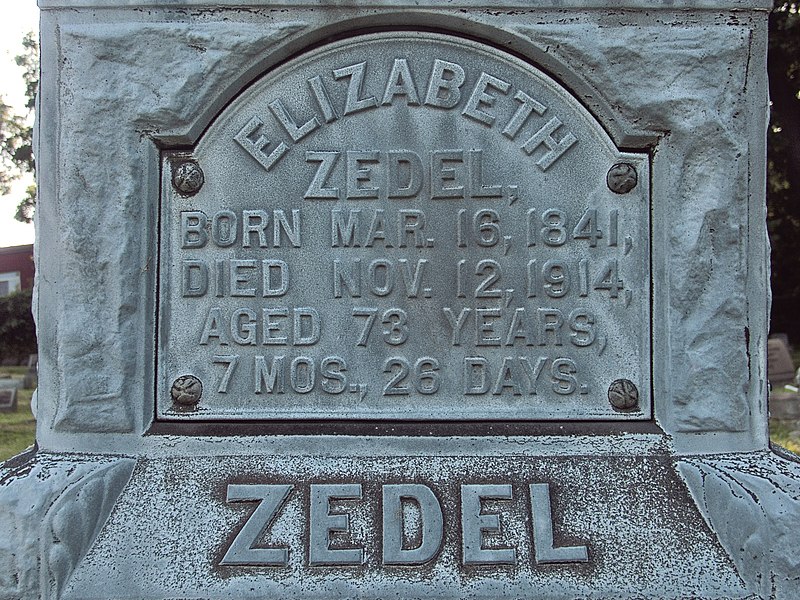There may be others, but this is the only zinc monument old Pa Pitt can remember finding in the Homewood Cemetery. Zinc monuments were prohibited in many high-class cemeteries, but sometimes people sneaked them in anyway. It’s actually a rather sumptuous monument by zinc standards, but it’s quite modest by Homewood Cemetery standards.
-
Nicholson Monument, Homewood Cemetery
-
John C. Hill Monument, Prospect Cemetery
A bilingual zinc or “white bronze” monument for a native of Saxe-Weimar-Eisenach (now part of Thuringia): English on one side, German on the other. Unusually it gives us two dates: the date of death (1877) and the date the monument was erected (1880).
Kisselbach is a very small town: Wikipedia gives its current population as 586.
The epitaph seems to be from an old folk song. Father Pitt appends his own attempt at a translation, but anyone who knows German better is welcome to improve it.
Lebe wohl du mutterliche Erde,
Nimm mich auf in deinen kühlen Schoos,
Dass mein Herz nach kummer nach beschwerden,
Ruhen möge unterm kühlen Moos.Farewell, thou motherly earth,
Take me in thy cooling lap,
So that after all my trials and pains,
My heart may rest under the cooling moss.This particular style of monument is the Monumental Bronze Company’s Design No. 8.
-
Elizabeth Zedel Monument, St. Paul’s Lutheran Cemetery (Mount Oliver)
Readers who have explored this site know already that Father Pitt collects zinc monuments. They were mass-produced and considerably cheaper than stone monuments of equivalent size, so that they were often condemned as tasteless and excluded from cemeteries for the better classes of dead people. But they live up to the zinc monument vendors’ extravagant claims: they are as permanent as bronze, or more so, and could be bought in a huge variety of shapes with interchangeable reliefs on the panels.
Here is one of the more modest zinc monuments Father Pitt has found, but it is very well preserved, though many of the stones around it are eroded and illegible.
-
John Edward McIntyre Monument, St. Joseph Cemetery
A typical zinc monument adapted to Catholic tastes by adding a big cross on top. It remembers a seventeen-year-old boy who died in 1892; it may have been bought with the intention of adding other McIntyres as they moved in, but no other names were ever added, and most of the monument is taken up with the interchangeable filler designs offered in the monument company’s catalogue.
-
Reed Monument, Oak Spring Cemetery

A typical zinc pillar with every panel filled to capacity with inscriptions. Father Pitt guesses that it was bought in about 1899 (the date of the death of Harvey Neill Reed), but the family took the opportunity to remember many other Reeds perhaps otherwise unrepresented by monuments, going all the way back to 1839. A Reed family was among the first settlers of the Canonsburg area, and some of those early settlers have tombstones very near this plot; these Reeds are probably related.





























